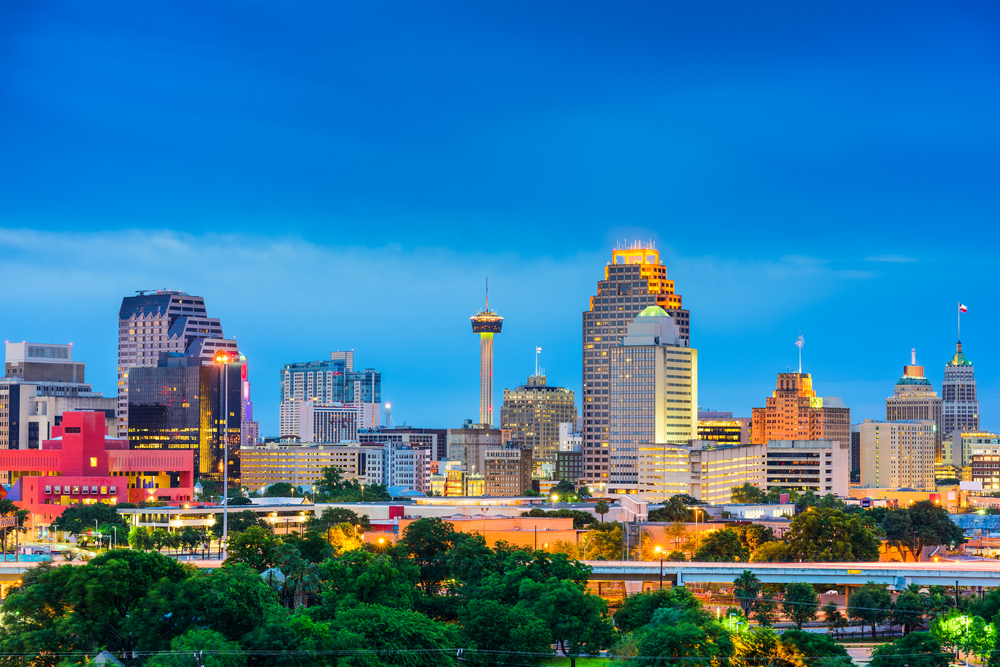SCOTUS Rules District Courts Can’t Second Guess Appellate Courts’ Ruling on Costs

In San Antonio v. Hotels.com, L.P., 593 U.S. ____ (2021), the U.S. Supreme Court held that a district court does not have the discretion to deny or reduce the costs awarded by an appellate court under Federal Rule of Appellate Procedure 39. The justices’ decision was unanimous.
Facts of the Case
The City of San Antonio—acting on behalf of a class of 173 Texas municipalities—was awarded a multi-million-dollar judgment in Federal District Court against a number of popular online travel companies (OTCs) over the calculation of hotel occupancy taxes. To prevent execution on that judgment pending appeal, the OTCs obtained supersedeas bonds securing the judgment.
On appeal, the Court of Appeals determined that the OTCs had not underpaid on their taxes. In accordance with Federal Rule of Appellate Procedure 39(d), the OTCs filed with the circuit clerk a bill of costs seeking appellate docketing fees and printing costs, which were taxed without objection. The OTCs then filed a bill of costs in the District Court seeking more than $2.3 million in costs—primarily for premiums paid on the supersedeas bonds that are listed in Rule 39(e) as “taxable in the district court for the benefit of the party entitled to costs.”
San Antonio objected and urged the District Court to exercise its discretion to decline to tax all or most of those costs. The District Court held that it had no discretion to deny or reduce those costs under Circuit precedent. The Court of Appeals affirmed, reasoning that the District Court lacked discretion to deny or reduce appellate cost awards.
Supreme Court’s Decision
The Supreme Court unanimously affirmed, holding that Rule 39 does not permit a district court to alter a court of appeals’ allocation of the costs listed in subdivision (e) of that Rule. Justice Samuel Alito wrote on behalf of the Court.
In reaching its decision, the Court rejected San Antonio’s argument that “the appellate court may say ‘who can receive costs (party A, party B, or neither)’ but lacks ‘authority to divide up costs.’” Instead, the justices sided with the OTCs, agreeing that the appellate court has the discretion to divide up the costs as it deems appropriate and that a district court cannot alter that allocation.
“There is a longstanding tradition of awarding certain costs other than attorney’s fees to prevailing parties in the federal courts,” Justice Alito explained. He added that Rule 39 “certainly does not suggest that the court of appeals may not divide up costs,” but “[o]n the contrary, the authority of a court of appeals to do just that is strongly supported by the relationship between the default rules and the court of appeals’ authority to ‘order otherwise.’”
Justice Alito went on to emphasize that the court of appeals’ determination that a party is “entitled” to a certain percentage of costs would mean little if the district court could take a second look at the equities. He wrote:
Suppose that a court of appeals, in a case in which the district court’s judgment is affirmed, awards the prevailing appellee 70% of its costs. If the district court, in an exercise of its own discretion, later reduced those costs by half, the appellee would receive only 35% of its costs—in direct violation of the court of appeals’ directions. Or suppose that the court of appeals, believing that the decision below was plainly wrong, awards the prevailing appellant 100% of its costs. It would subvert that allocation if the district court declined to tax costs or substantially reduced them because it thought that there was at least a very strong argument in favor of the decision that the court of appeals had reversed—which, of course, was the district court’s own decision. In short, the court of appeals’ determination that a party is “entitled” to costs would mean little if, as San Antonio believes, the district court could take a second look at the equities.
The Supreme Court was also not persuaded that applying the plain text of Rule 39 will create the problems that San Antonio raised. “We do not see why our interpretation will lead to confusion,” Justice Alito wrote. “This interpretation quite sensibly gives federal courts at each level primary discretion over costs relating to their own proceedings.”
Previous Articles
Justices Skeptical of Trump Administration Tariffs
by DONALD SCARINCI on December 18, 2025
The U.S. Supreme Court heard oral arguments in Learning Resources, Inc. v. Trump (consolidated with...
SCOTUS Takes Up Key Election Case Involving Mail-In Ballots
by DONALD SCARINCI on December 17, 2025
The U.S. Supreme Court recently granted certiorari in a key election case, Watson v. Republican Nat...
SCOTUS Adds Second Amendment Case to Docket
by DONALD SCARINCI on November 27, 2025
The U.S. Supreme Court will consider another important Second Amendment case this term. The latest ...
The Amendments
-
Amendment1
- Establishment ClauseFree Exercise Clause
- Freedom of Speech
- Freedoms of Press
- Freedom of Assembly, and Petitition
-
Amendment2
- The Right to Bear Arms
-
Amendment4
- Unreasonable Searches and Seizures
-
Amendment5
- Due Process
- Eminent Domain
- Rights of Criminal Defendants
Preamble to the Bill of Rights
Congress of the United States begun and held at the City of New-York, on Wednesday the fourth of March, one thousand seven hundred and eighty nine.
THE Conventions of a number of the States, having at the time of their adopting the Constitution, expressed a desire, in order to prevent misconstruction or abuse of its powers, that further declaratory and restrictive clauses should be added: And as extending the ground of public confidence in the Government, will best ensure the beneficent ends of its institution.





